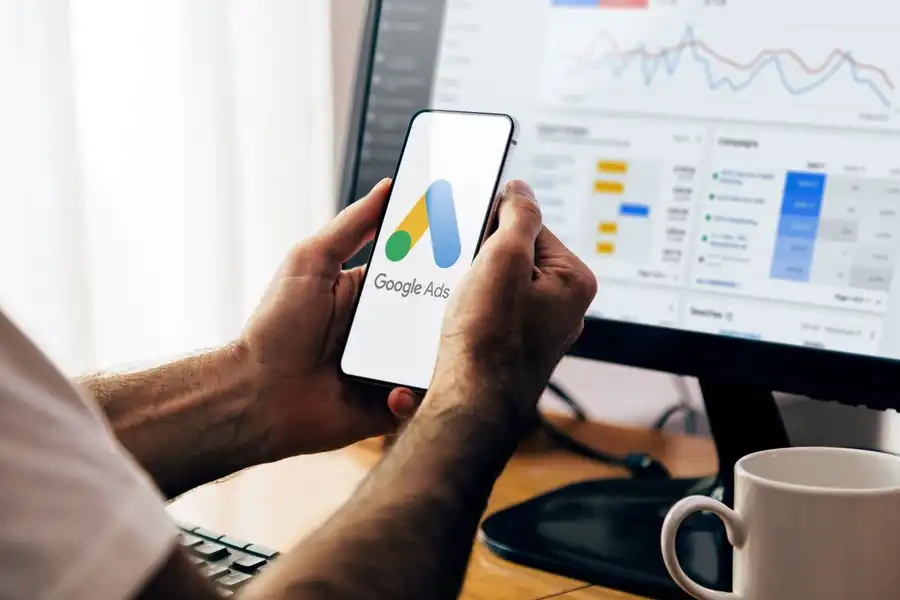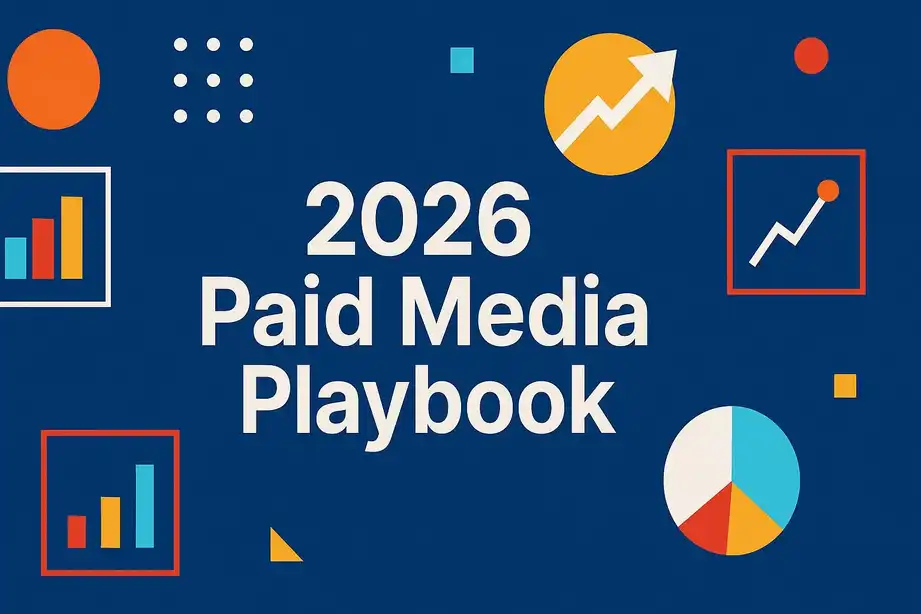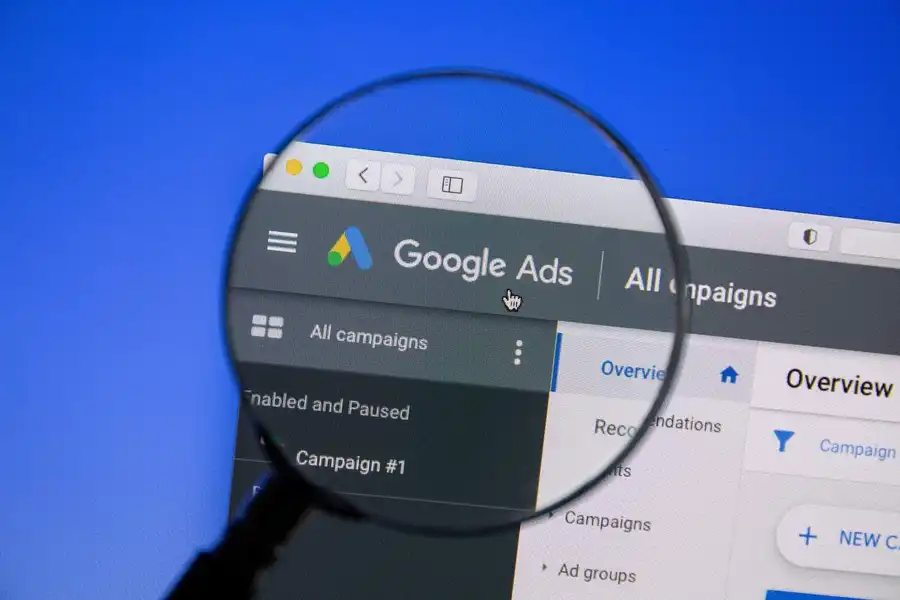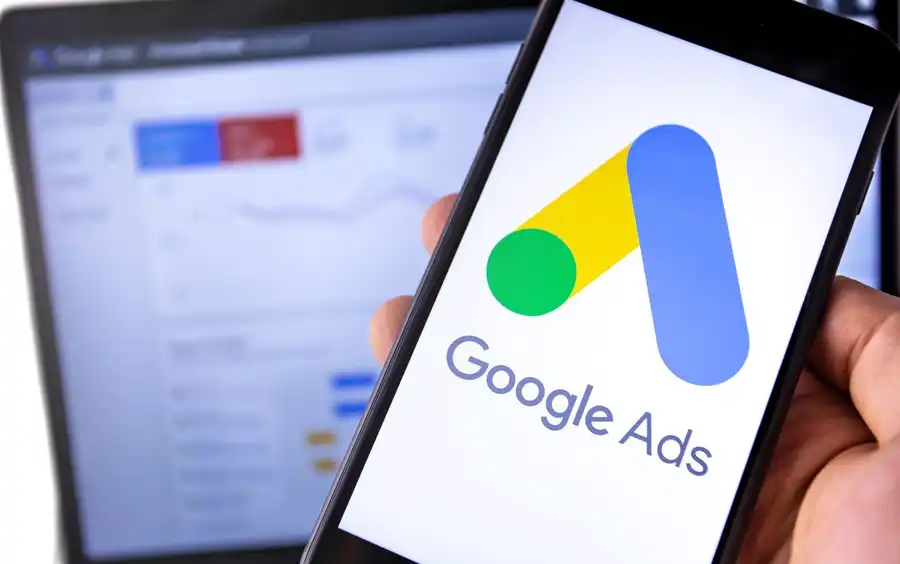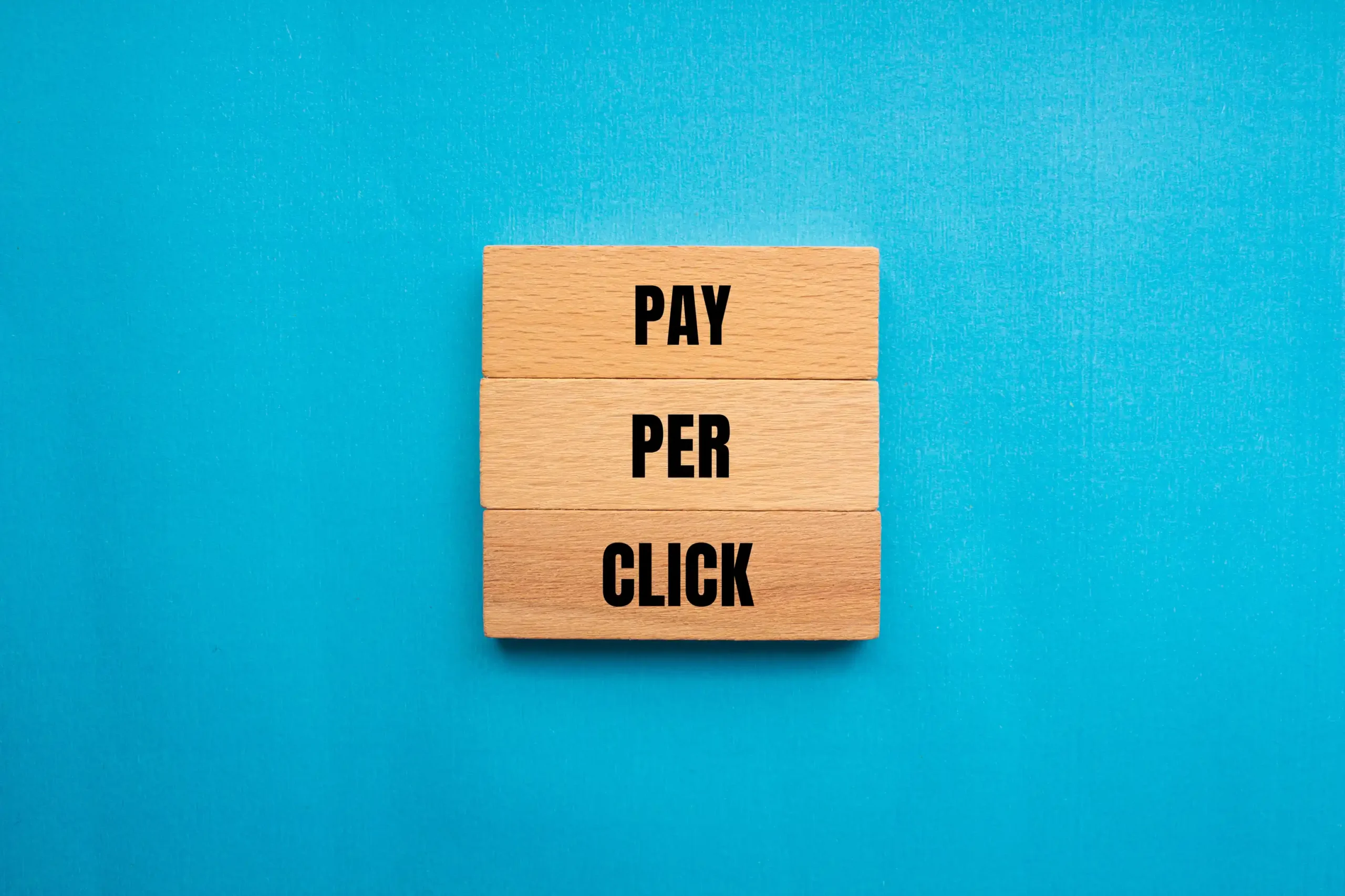What is Paid Search Advertising?
Paid search marketing, also known as pay-per-click (PPC) advertising, is a digital marketing strategy in which businesses pay search engines or advertising platforms like Google Ads to display their ads prominently in search engine results and on various websites.
Advertisers select specific keywords or phrases that are relevant to their products or services, and they bid on these keywords to have their ads appear when users search for those terms. When someone clicks on their ad, the advertiser pays a fee, hence the name “pay-per-click.”
When you ask what is paid search marketing, it refers to a highly targeted strategy that enables businesses to reach specific audiences and manage their budgets effectively. It offers immediate visibility and serves as a measurable way to:
- Drive traffic
- Generate leads
- Increase sales
Paid search tools and platforms provide powerful features such as:
- keyword targeting,
- ad scheduling,
- geographic targeting,
- and detailed analytics,
allowing advertisers to tailor their campaigns to specific demographics and user behaviors.
Effective paid search management is essential for optimizing these campaigns. By:
- adjusting bids,
- refining keywords,
- and analyzing performance metrics,
businesses can ensure they get the best return on investment.
With expert paid search management, companies can continuously improve their strategies to maximize reach and efficiency. These tools and management practices enable precise targeting and budget control, helping businesses achieve their marketing objectives effectively.
Paid search not only boosts your online visibility but also enables you to measure the ROI of your advertising efforts, making it a versatile and cost-effective way to:
- Drive traffic
- Generate leads
- Increase sales
Examples of paid advertising include:
- Google Ads
- Facebook Ads
- Instagram Sponsored Posts
- LinkedIn Ads
- Twitter Promoted Tweets
Let’s break down what paid search is, how it works, and how it’s different from SEO.
How Does Paid Search Work?
- Keyword Selection: The process begins with advertisers or their digital advertising agencies selecting keywords that are relevant to their business goals and can drive valuable traffic.
- Maximum Bids: They then set maximum bids for these keywords, which determines the highest amount they are willing to pay for a click on their ad.
- Real-Time Auction: When a user searches using one of these keywords, a real-time auction is conducted by the search engine to determine which ads will appear on the SERP and in what order.
- This auction considers both the maximum bid set by the advertiser and the quality score of their ad, which reflects its relevance and expected performance.
- The ad rank, which determines the ad’s position on the SERP, is calculated based on these factors rather than just the bid amount alone.
- This system ensures that ads shown are not only relevant to the user’s search query but also likely to provide a good user experience, thus optimizing the effectiveness of paid search campaigns.
Paid search vs Natural search
Paid search and natural search (also known as organic search) are two distinct methods of gaining visibility in search engine results:
1. Paid Search
Paid search involves advertisers paying for ads to appear in search engine results for specific keywords or phrases, marked as ‘Ad’ or ‘Sponsored’ and appearing at the top or bottom of the SERP. Advertisers bid on relevant keywords and pay each time a user clicks on their ad (PPC model). It offers immediate visibility but necessitates ongoing investment to sustain traffic.
2. Natural Search (Organic Search)
Natural search, achieved through SEO practices, optimizes web pages to appear organically in search engine results pages (SERPs) without paid placement. This involves optimizing content, improving site structure, and earning backlinks to enhance visibility and authority. Organic results, below paid ads, rely on search engine algorithms that prioritize relevance to user queries and ranking factors. While organic results provide lasting traffic and credibility, continuous effort is essential for maintaining and improving rankings.
Key elements of Paid Search Advertising
Paid search is a form of digital media buying where you pay search engines such as Google or Bing for ad space on their search engine results page (SERP).
Before you can start using this powerful digital marketing tool, know that it involves crafting campaigns around four key elements:
1. Keywords
Keywords are fundamental to any paid search campaign, representing the words and phrases users input into search engines to find products or information. Effective keyword research is crucial for identifying terms relevant to your business and audience, forming the cornerstone of successful PPC marketing.
2. Ads
Paid search ads, also known as paid listings, are text-based advertisements that commonly appear above and below organic search results on a search engine results page. They can also be displayed on Google Maps, alongside local listings, YouTube, and other keyword-related environments.
3. Campaign structure & targeting
Campaigns and ad groups organize paid search campaigns. The campaign level is where you set daily budgets and other targeting criteria (Geography, day-part, etc.). Ad groups will go under a campaign to group similar keywords with the most relevant ad text. You can also control bidding and other tracking parameters at the ad group level.
4. Bidding
Pay-per-click works just like it sounds. You only pay when someone clicks on your ad. What’s even better, you can set a maximum bid for each keyword to ensure you never pay more than you want for a click.
How are Paid Search Ads Ranked?
When ranking an ad, search engines use two factors – maximum bid and quality score. The maximum bid is straightforward. It’s how much you are willing to pay if someone clicks on your ad. The quality score is more involved and is affected by keyword and ad relevance, landing page experience, and expected click-thru rate (CTR).
3 major PPC ad components to focus on are:
1. Landing Page Experience
The landing page is an essential part of your ad. Ensure your landing page is relevant to the keyword search, provides a fast and seamless user experience, and delivers what the ad text promises.
2. Ad Relevance
Searchers are looking for specific products, services, and information, so your ad needs to be highly targeted and relevant to users.
3. Expected Click-Thru Rate (CTR)
How likely is your ad to be clicked on? Google estimates CTR on your historical performance, similar advertisers’ historical performance, and the Google Ads features you use.
Google Paid Search Ranking
Google’s paid search ranking hinges on factors like Quality Score and maximum bid, shaped by:
- Ad relevance
- Expected CTR
- Landing page experience
Ads with superior Quality Scores and competitive bids, also known as advertising SEO, tend to secure higher placements on the SERP, ensuring relevance and a positive user experience, thereby maximizing campaign effectiveness. By optimizing these factors and conducting thorough paid search analysis, businesses can improve their Google paid search ranking, leading to increased visibility and potential conversions.
Writing Paid Search Ads
Writing Paid Search text ad copy is a critical part of any PPC search campaign. The key to writing ad copy is to make sure it’s:
- Relevant
- Specific
- Engaging to your target audience
Your ads should be concise and to the point, making sure to use the keywords you are bidding on.
The components of a Paid Search ad include:
- Headline
This is the main title of your ad that appears in bold text at the top of the ad on the search results page. It is limited to 30 characters. - Description Lines
These are two short lines of text that provide more details about your product or service. Each line is limited to 90 characters. - Display URL
This is the visible URL that appears beneath your ad. It can be customized to show your brand name or relevant keyword. - Final URL
This is the landing page URL that users are directed to when they click your ad. - Ad Extensions
These are additional pieces of information that can be added to your ad to provide more context and encourage clicks. These could include location information, costs, or other important information for your audience.
What is the Difference Between Paid Search and Organic Search?
Organic search results appear on the same page with paid search ads. However, instead of placing bids and paying-per-click to appear, you earn organic search results by investing in Search Engine Optimization (SEO).
Organic results are free listings that appear in search engine results pages (SERPs) because it’s relevant to someone’s search terms. Businesses use SEO to optimize their site’s visibility or rankings in search results to:
- Increase website traffic
- Attract more leads and customers
- Drive revenue
So, organic search marketing is the better option? Not necessarily. There is still a cost-per-click (CPC) to SEO.
SEO takes time. Depending on how established your website is and the popularity of keywords you want to rank higher for, it can take months or even years to get in the top 10 results. Every hour you, your employees, or your paid search advertising agency or digital marketing agency spend working on SEO content costs money.
With the right paid search strategy and relevant content for targeted keywords, paid search can swiftly place your ads on the first page of search results, enhancing visibility and driving traffic effectively.
PPC vs paid search
PPC (Pay-Per-Click) and paid search are terms often used interchangeably in digital marketing, but they can have slightly different nuances:
PPC (Pay-Per-Click): PPC refers specifically to the pricing model where advertisers pay a fee each time their ad is clicked. This model is commonly associated with search engine advertising, social media advertising, and display advertising.
Paid Search: Paid search generally refers to the broader strategy of paying for ads to appear in search engine results pages (SERPs). It encompasses the entire process of bidding on keywords, creating ads, and managing campaigns to achieve specific marketing objectives.
Key Benefits of Paid Search
- Immediate Visibility: Ads appear at the top of search engine results pages (SERPs) almost instantly after the campaign is launched.
- Targeted Advertising: Reach specific audiences by targeting keywords, demographics, locations, and devices.
- Measurable Results: Access detailed analytics to track performance, understand ROI, and optimize campaigns.
- Cost Control: Set budgets and bids to control advertising spend and avoid overspending.
- Increased Traffic: Drive more visitors to your website, increasing the potential for conversions.
- Enhanced Brand Awareness: Consistent visibility in search results boosts brand recognition and credibility.
Impact of paid search engine optimization strategies
Paid search optimization strategies play a crucial role in boosting businesses’ online visibility, traffic, and overall success in digital marketing. These strategies empower companies to strategically bid on keywords, ensuring their ads achieve prominent placement in search engine results and across diverse online platforms.
By leveraging paid SEO, businesses can achieve immediate visibility in search results, effectively targeting specific keywords and demographics. This increased visibility often results in a higher volume of website traffic and potential customers, thus boosting brand awareness and revenue.
Additionally, paid SEO, as a component of PPC in digital marketing, offers precise tracking and analytics. This allows businesses to measure the ROI of their campaigns in real-time and make data-driven adjustments to optimize performance.
Moreover, it complements organic SEO efforts by occupying prime search result real estate, giving businesses a competitive edge in capturing the attention of their target audience. Overall, paid SEO strategies play a pivotal role in a well-rounded digital marketing strategy, providing businesses with a powerful tool to drive results and achieve their online marketing objectives.
This blog was last updated on 6 months ago by Siliveru Rakesh
